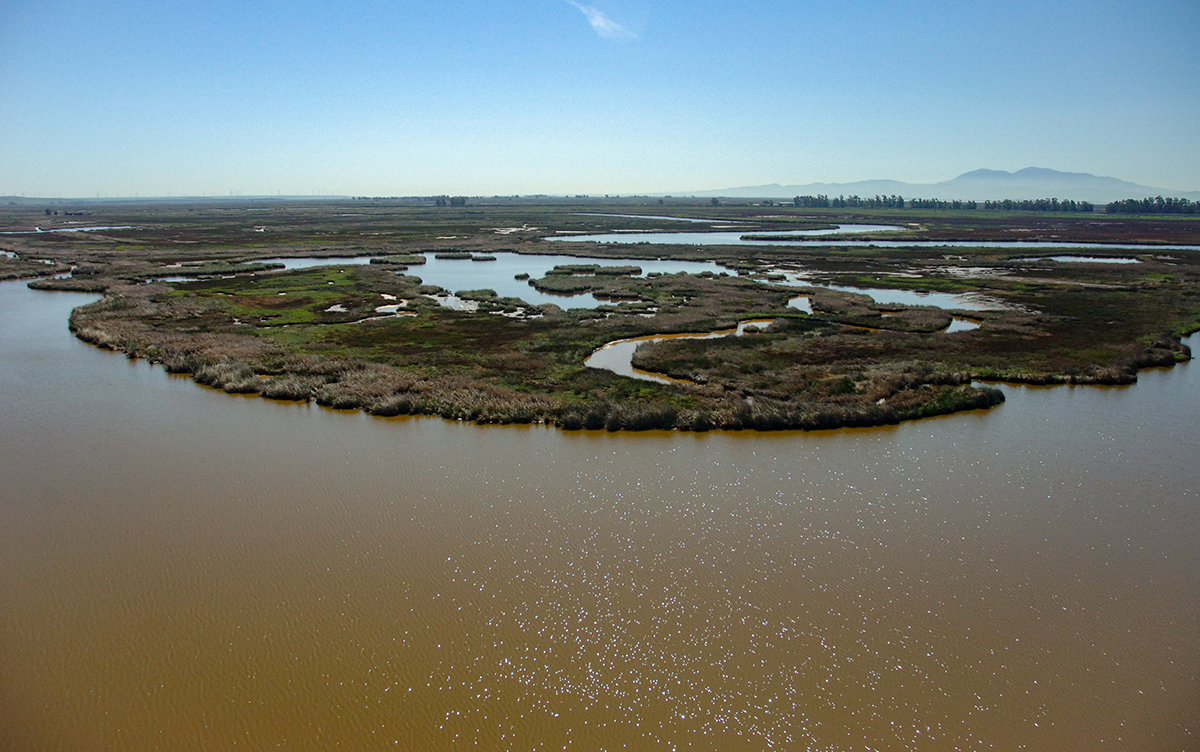
The California Chamber of Commerce and a diverse coalition of organizations highlighted the far-reaching economic impacts of proposed changes to water management within the San Francisco Bay/Sacramento-San Joaquin Delta (Bay-Delta) system in a comment letter submitted to the State Water Resources Control Board (State Water Board) on January 10.
To avoid a substantial reduction in water supplies for much of California, the coalition asked the State Water Board to support a holistic approach, proposed by federal, state, and local water agencies, that would balance the diverse needs of urban and agricultural uses and the environment.
Competing Alternatives
The State Water Board is responsible for adopting and updating the Water Quality Control Plan for the Bay-Delta, which establishes water quality measures and flow requirements needed to provide reasonable protection for environmental and consumptive water uses throughout the watershed.
Currently, the State Water Board is nearing the final stages of completing an update to the Water Quality Control Plan, a process that began in 2008 and that will have a significant impact on water availability for much of the state. The update currently before the State Water Board involves the Sacramento basin and its tributaries, including the Feather River, Yuba River, American River, and the Mokelumne River.
Before the State Water Board are two competing alternatives.
• One approach, proposed by State Water Board staff and referred to as the “regulatory pathway,” would mandate that 55% of flows within the Sacramento Valley watershed be unimpaired, or, in other words, dedicated as environmental flows and not available for storage or diversion.
• Another possible pathway is the Agreements to Support Healthy Rivers and Landscapes (HRL program) — formerly referred to as the Voluntary Agreements — that reflect a suite of commitments among state, federal, and public water agencies. The HRL program, developed with the leadership of Governor Gavin Newsom and his administration, would use both flow and non-flow measures that help support native species and the environment and create a governance structure that oversees implementation and assists in decision-making.
Harm to Economy, Food Supply
The coalition, which includes water agencies, agriculture, housing developers, and more, detailed the substantial consequences that the unimpaired flows approach would have on California’s economy. The reduced water supply from the unimpaired flows approach raises questions about whether the state could continue to meet its water demands, particularly given the worsening challenges to water supply reliability that climate change is likely to present. Key sectors of California’s economy depend heavily on a consistent access to water.
California, as the leading state in the value of sales from agricultural production, is critical to supporting a global food supply chain. Most of the agricultural water use in California is within the Sacramento-Delta watershed and the San Joaquin Valley regions. Reduced groundwater pumping under the Sustainable Groundwater Management Act (SGMA) is imposing significant stress on the agricultural sector. The combined costs of SGMA and the unimpaired flows approach would ravage the San Joaquin Valley economy and agriculture in other regions of the state.
Housing, Cost Impacts
The unimpaired flows approach would also worsen California’s housing crisis. New housing development requires assurances that local water suppliers would have the supplies necessary to service new connections. Much of the affordable housing regions in California relies on Delta water supplies. Reduced water supplies from the Bay-Delta would make it more difficult for water purveyors to meet demand from additional housing developments.
The unimpaired flows approach would also make it more difficult for water agencies to maintain affordable rates. Reduced water supplies would increase costs of water delivered from the Bay-Delta. Agencies would be required to invest in more expensive alternative supply projects, such as recycling, water transfers, and desalination, where appropriate, to offset reduced surface water deliveries. The high costs of these projects, in combination with potential increased operational costs, would lead to direct economic impact and higher rates for customers.
Coalition Request
The coalition asked the State Water Board to incorporate the HRL program into its update of the Bay-Delta Plan. The HRL program goes beyond simply adding flow to streams and, instead, addresses the underlying ecosystem functions needed to restore fish populations.
One of the critical aspects of the HRL program is the dedication of significant flows for the environment coupled with landscape-scale restoration. This approach, rather than using only flows, focuses on maintaining functions of a river that support ecosystem health, such as sediment movement, water quality, and timing flows based on species migration and reproduction.
These flows, coupled with suitable habitat, promote the benefits to fish and wildlife, which is why the HRL program includes major investments in habitat restoration projects. Scientific study on the matter shows that a combination of habitat and flow provides substantial systemwide benefits.
The more reasonable flow measures in the HRL program would assist in ensuring that water users of all types can better predict water availability and plan accordingly. For example, developers can better model water availability to serve new housing developments. Also, agricultural businesses can better plan for the appropriate acreage to plant, and this increased certainty helps support related businesses. Overall, this alternative minimizes negative impacts on the economy while achieving ecosystem benefits.
Next Steps
State Water Board staff have said they expect the Board to decide which option it will adopt in the updated Bay-Delta plan in the summer or fall of this year. In the meantime, the State Water Board is holding a series of workshops to discuss both alternatives.

